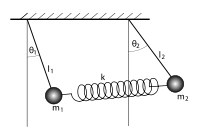I guess here I have to agree with James, that clears it all up???
As far as I was aware antineutrinos are hypothetical. Some even suggest the neutrino may be its own anti particle. In any case anti neutrinos appear only in the mathematical models as far as I am aware. i.e. Never been detected.
As far as the math goes, still in the same place as earlier. Define your terms and use full derivations or I have to get out the books and look too much up.
So you understand this better, while physics was my major, my achedemic exposure was late 1960's. The weak nuclear force was still just the weak nuclear force. The elctro-weak force had not yet been worked out. Calculators were not allowed in classes or for tests (we were expected to use pencils and paper, maybe a slide rule), and computers were pretty much limited to mainframes a few minis perhaps.., no internet! Then I spent forty years working in an unrelated field.
So, you see why when the commentary in a post does not fully explain the math, I wind up deciding, is it worth the effort to go look the background information up? or maybe not! I can do it if it seems important or interesting, that is not always the case...
BTW I never posted any associated math, so I am fairly certain that portion in bold above designates your clarification should have been directed at someone else, who maybe did not need it anyway.



